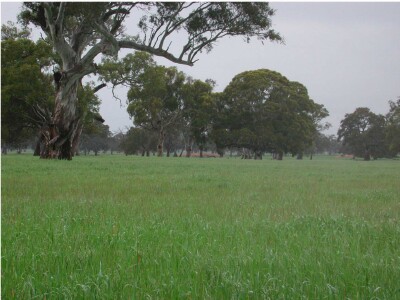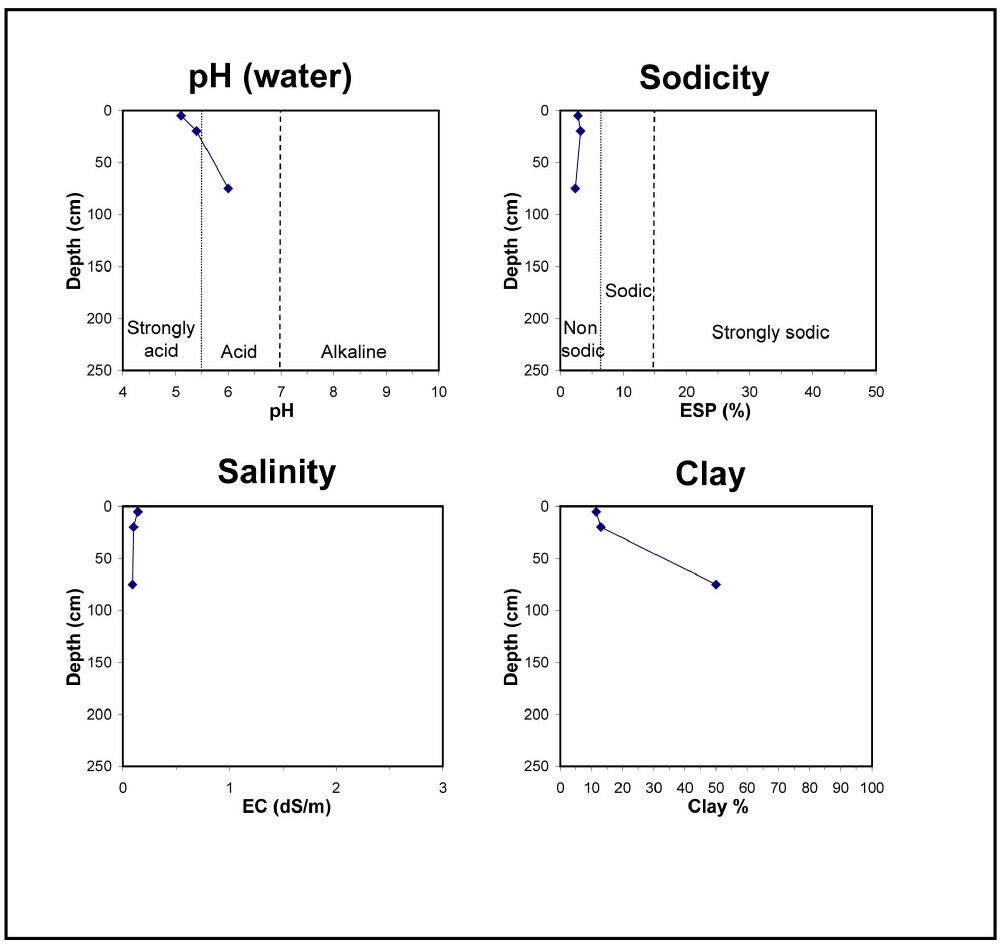GL3
| Site: GL3 | Land Unit: Dundas Redgum |
 |
General Land Unit Description: The flat surface of the Dundas Tablelands predominantly consists of Brown Chromosols and to a lesser extent Yellow Chromosols with a ferric horizon, typically occurring above the clay subsoil. The soil is commonly developed over a highly weathered mottled zone. This red and white mottling, sometimes referred to as ‘tiger mottles’, is thought to be the result of deep chemical weathering which occurred during the late Tertiary period. Red gums are the dominant vegetation found on this surface. |
Site Description:
| Slope: 2% | Geology: Cainozoic duricrust |
| Landform pattern: Level to gently undulating plain | Position in landscape: Flat |
| Internal drainage: Imperfectly drained |
Soil Profile Morphology
| A1 | 0-15 cm | Very dark greyish brown (10YR3/2) loam, weak subangular blocky structure, very few fine subrounded sedimentary pebbles (2-5 mm), pH 5.1. Gradual transition to: |
| A2 | 15-30 cm | Dark greyish brown (10YR4/2) sandy loam, bleached (10YR6/3) when dry, weak subangular blocky structure, small to medium ferruginised nodules are abundant (2-20 mm), pH 5.4. Clear transition to: |
| Subsoil | ||
| B2 | 30-120 cm | Reddish yellow (7.5YR6/8) fine sandy light clay, many faint orange and red mottles, moderate subangular blocky structure (2-5 mm), many angular sedimentary fragments, pH 6.0. Clear transition to: |
| B3 | 120-200 cm | Yellowish red (5YR4/6) sandy clay loam, many fine prominent red and grey mottles, moderate subangular blocky structure (5-10 mm), abundant angular sedimentary fragments, pH 5.5. |
- Strongly acidic topsoil
- Strong texture contrast between topsoil and subsoil
- Bleached A2 horizon
- Mottled subsoil
- Ferric horizon



